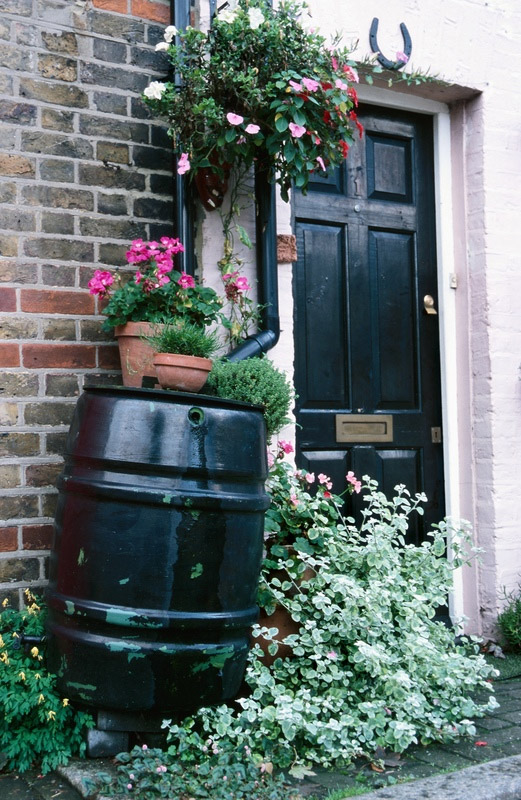Gardens
Make a Rain Barrel
Keep your garden hydrated by making your own rain barrel that will save money and water. Keeping your garden well-watered through the summer months is easier when you make a rain barrel to use as a reservoir to store spring rain in. Traditional rain barrels were typically made of wood, but wooden barrels are heavy […]

Make a rain barrel using a plastic or metal barrel.
Keep your garden hydrated by making your own rain barrel that will save money and water.
Keeping your garden well-watered through the summer months is easier when you make a rain barrel to use as a reservoir to store spring rain in. Traditional rain barrels were typically made of wood, but wooden barrels are heavy and expensive, and they eventually decay from exposure to the elements. Organic farmer George DeVault recommends a more practical solution: recycled plastic food barrels. Widely available from markets, restaurants, and food importers, these large plastic barrels are inexpensive, relatively lightweight, and free of toxic chemicals.
Materials to Make a Rain Barrel
- 1 large (40- to 55-gallon) plastic food barrel (metal barrels also work for this project)
- Drill with a 3.4-inch spade bit
- 1 outdoor tap
- Plumber’s caulk
- Nylon window screen (a piece large enough to fit over the open end of the barrel)
- Bungee cord (long enough to fit tightly around the top of the barrel)
- 2 or 3 cinder blocks
Instructions to Make a Rain Barrel
Step 1. Use a mild detergent and water to clean and rinse the barrel. Step 2. Drill a hole for the tap about 6 inches from the bottom of the barrel. Step 3. Fit the tap into the hole and caulk it securely. Let the caulk dry for the recommended amount of time before using the barrel. Step 4. Put the barrel where you want it, setting the barrel on the cinder blocks to allow enough room to position a watering can or bucket under the tap. To collect the most water, place the barrel at the end of a downspout from the eaves of your house or garden shed. Step 5. Stretch the screening across the top of the barrel and fasten it in place with the bungee cord. This will keep out insects and other critters. You’ll be surprised at how quickly your barrel fills after even a relatively small amount of rain. You can add overflow capacity by making another rain barrel and connecting it to the first one with a length of PVC pipe caulked into both barrels 4 to 6 inches below their tops. In cold-winter regions, empty your rain barrel and store it indoors before freezing weather arrives. It makes a handy place to store coiled hoses,empty pots, and other seasonal garden equipment through the winter.Excerpt from 1,001 Old-Time Household Hints—brought to you by Skyhorse Publishing



